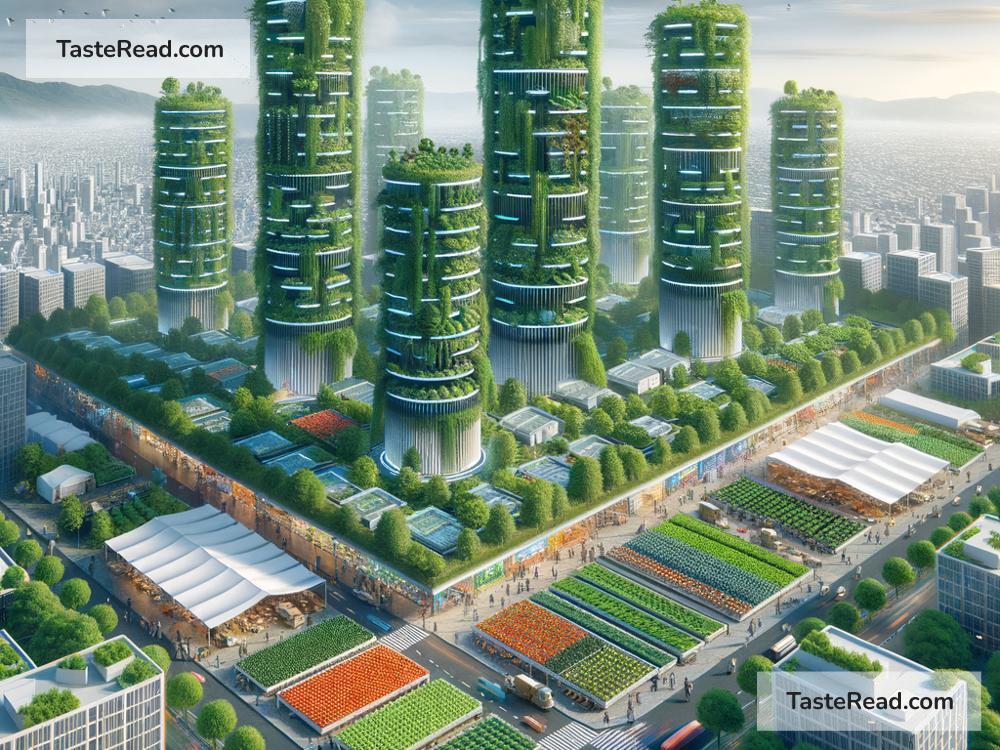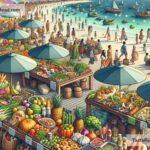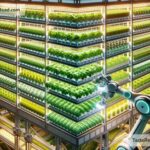The Future of Food and Sustainable Urban Planning
Imagine living in a city where fresh fruits and vegetables grow right on your rooftop, where parks are not just places for recreation but also farms, and where communities work together to ensure that no food is wasted. This is the future of food and sustainable urban planning—a world where cities are designed to feed their people while protecting the planet.
The Challenge We Face
Today, the way we grow, produce, and consume food is hurting the environment. Large-scale farming leads to soil degradation, deforestation, and greenhouse gas emissions. On top of that, transporting food over long distances uses fossil fuels and contributes even more to climate change.
At the same time, cities are growing rapidly. By 2050, nearly 70% of the world’s population will live in urban areas. Feeding so many people in crowded cities will become a big challenge. To address this problem, we need to rethink how food is produced and how cities are organized to support sustainable living.
What Is Sustainable Urban Planning?
Sustainable urban planning is the art of designing cities in smart and eco-friendly ways. It focuses on reducing waste, conserving energy, and making urban life healthier for people and the planet. When it comes to food, it means reshaping how cities grow, share, and consume food to ensure that future generations can thrive.
The Role of Urban Agriculture
One exciting solution is urban agriculture, where food is grown within city limits instead of faraway farms. This could include rooftop gardens, vertical farms, and community plots in neighborhoods. Urban agriculture makes fresh produce more accessible and cuts down the energy needed to transport food from rural areas to cities.
Take vertical farming as an example. Imagine a tall building where layers and layers of crops grow under LED lights. Vertical farms use less land, water, and fertilizer than traditional farming, making them incredibly efficient. Plus, these farms can be placed right in the middle of cities, reducing the distance food travels to reach people’s plates.
Technology in Urban Food Systems
Technology plays a huge role in shaping the future of food. Smart sensors, drones, and artificial intelligence are being used to monitor crops, optimize irrigation, and reduce the need for harmful pesticides. This not only makes farming more efficient but also kinder to the environment.
Aquaponics and hydroponics are two examples of innovative farming methods being adopted in urban areas. Aquaponics combines fish farming with plant cultivation, where fish waste feeds the plants and the plants clean the water for the fish. Hydroponics grows plants without soil, using nutrient-rich water instead. Both methods save space and water, making them perfect for cities.
Communities Taking the Lead
One of the most exciting aspects of sustainable food planning is how communities are getting involved. Cities can foster spaces where people grow food together in community gardens. These gardens bring neighbors closer, teach people about healthy eating, and reduce the need to buy packaged food from stores.
Food-sharing programs and apps are also being developed to minimize waste. For example, apps can connect people who have extra food with those who need it, ensuring that surplus food doesn’t end up in landfills. Some cities already have programs where restaurants donate leftover food to shelters and food banks.
Designing Cities for Better Food Systems
Sustainable urban planning isn’t just about building gardens and farms; it’s about creating entire cities that support healthy and eco-friendly food systems. Urban planners can design neighborhoods with farmers’ markets, composting facilities, and farm-to-table restaurants. They can also focus on building bike paths and public transportation to reduce food-related emissions.
Green spaces, such as parks and rooftop gardens, can be designed not just for beauty but as food sources. These spaces absorb carbon dioxide, reduce pollution, and provide habitats for pollinators like bees. Some cities are even turning vacant lots into urban farms, reclaiming underused spaces for the betterment of communities.
Educating People About Sustainable Choices
A crucial part of sustainable food systems is educating people about making eco-friendly choices. Schools can teach children about gardening and composting, while cities can run campaigns to promote plant-based diets and reduce food waste.
When people understand where their food comes from and how their choices impact the planet, they are more likely to support sustainable initiatives. Small changes—like buying local produce, eating less meat, or composting food scraps—add up and create a big impact.
A Vision for the Future
The future of food and sustainable urban planning is full of possibilities. A city where every rooftop has a garden, every park serves as a farm, and every person has access to fresh, healthy food is not a dream—it’s a goal we can pursue together.
The challenges we face might seem big, but humans have always been resourceful. By using technology, fostering community involvement, and designing cities with sustainability in mind, we can turn our growing urban areas into hubs of innovation, health, and environmental stewardship.
The way we plan our cities and grow our food will determine the health of our planet and future generations. Let’s work together to build cities that feed their people while protecting the Earth. The future is in our hands—and on our plates.


